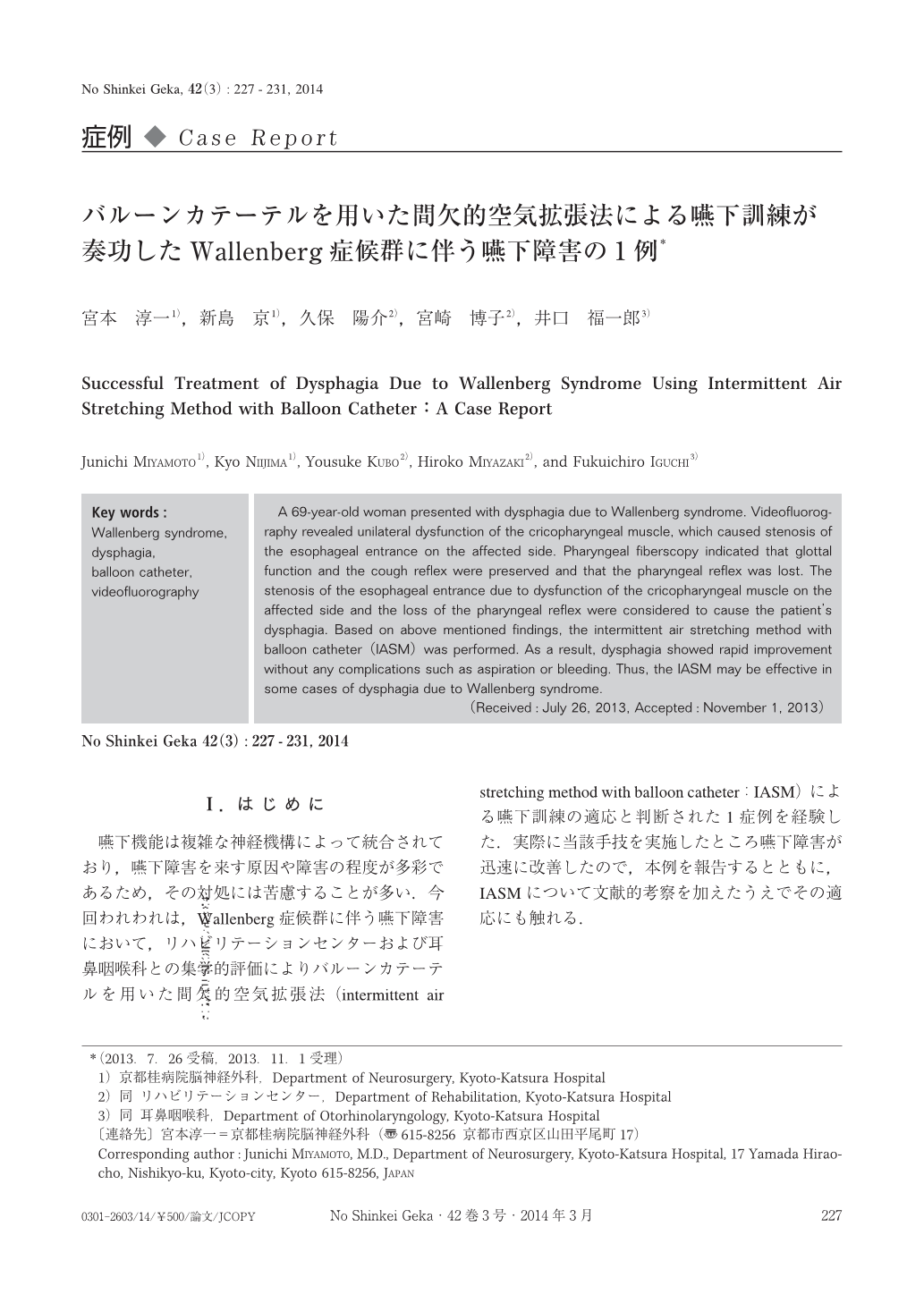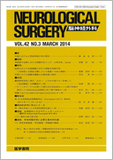Japanese
English
- 有料閲覧
- Abstract 文献概要
- 1ページ目 Look Inside
- 参考文献 Reference
Ⅰ.はじめに
嚥下機能は複雑な神経機構によって統合されており,嚥下障害を来す原因や障害の程度が多彩であるため,その対処には苦慮することが多い.今回われわれは,Wallenberg症候群に伴う嚥下障害において,リハビリテーションセンターおよび耳鼻咽喉科との集学的評価によりバルーンカテーテルを用いた間欠的空気拡張法(intermittent air stretching method with balloon catheter:IASM)による嚥下訓練の適応と判断された1症例を経験した.実際に当該手技を実施したところ嚥下障害が迅速に改善したので,本例を報告するとともに,IASMについて文献的考察を加えたうえでその適応にも触れる.
A 69-year-old woman presented with dysphagia due to Wallenberg syndrome. Videofluorography revealed unilateral dysfunction of the cricopharyngeal muscle, which caused stenosis of the esophageal entrance on the affected side. Pharyngeal fiberscopy indicated that glottal function and the cough reflex were preserved and that the pharyngeal reflex was lost. The stenosis of the esophageal entrance due to dysfunction of the cricopharyngeal muscle on the affected side and the loss of the pharyngeal reflex were considered to cause the patient's dysphagia. Based on above mentioned findings, the intermittent air stretching method with balloon catheter(IASM)was performed. As a result, dysphagia showed rapid improvement without any complications such as aspiration or bleeding. Thus, the IASM may be effective in some cases of dysphagia due to Wallenberg syndrome.

Copyright © 2014, Igaku-Shoin Ltd. All rights reserved.


